Animals (eg penguins, deer) and miscellaneous (eg cyclist, vehicles crossing, helicopters, wind gusts) warning signs may be installed by the RCA where in their opinion road users need to be advised that the normal operating conditions of the road have changed and road users need to be warned of the type of hazards. A summary of animal and miscellaneous warning signs are included in Table 12‑1 to Table 12‑4.
Table 12‑1: Horse riders and stock permanent warning signs
| Sign code | Example | Description/use |
|---|---|---|
|
W16-8 Horse riders |
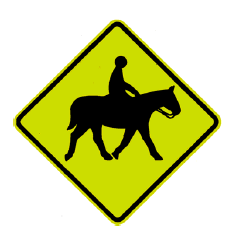 |
Should be installed where, in the opinion of the RCA, frequent use of areas within the road reserve and adjacent to the roadway by horses with riders constitutes a hazard. The symbol should be oriented such that the horse appears to be walking towards the roadway; eg where the sign is installed on the right-hand side of the road, the symbol should be reversed. For sign location see notes 1 and 2 |
|
W18-3.1 Stock - cattle |
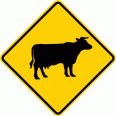 |
Should be installed where, in the opinion of the RCA, roadway conditions such as a lack of visibility coupled with a high frequency of driven stock movements (ie on a daily basis) either crossing or travelling short distances along a fenced roadway between parts of the same property, create a traffic hazard; installed where the lack of fences, walls etc. along the road reserve results in the continued presence of stock on the road. Should not be installed in 50km/h, 60km/h or 70km/h areas. Consideration should be given to using temporary signs (W3-4.1/W3-4.2) or cover up the permanent warning signs where stock movement is low (ie greater than two days intervals). For sign location see notes 1, 2, 3, and 4 |
|
W18-3.2 Stock - sheep |
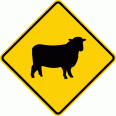 |
|
|
W18-3.3 Stock – deer |
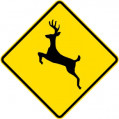 |
| Operating speed | Distance |
|---|---|
| 50km/h | 65m |
| 70km/h | 100m |
| 80km/h | 120m |
| 90km/h | 140m |
| 100km/h | 160m |
Table 12‑2: Wild animal permanent warning signs
| Sign code | Example | Description/use |
|---|---|---|
|
W18-3.4 Wild animals – horses |
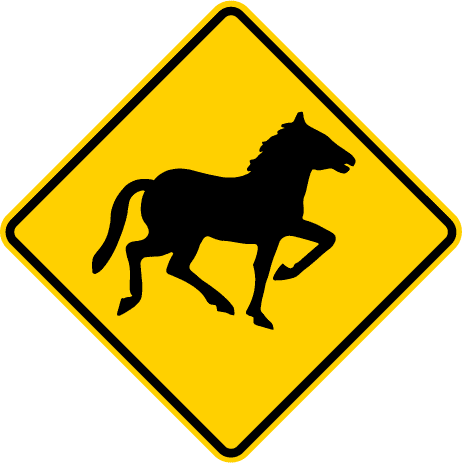 |
May be installed where, in the opinion of the RCA, the presence of wild animals within the road reserve and adjacent to the roadway constitutes a hazard. For sign location see notes 1, 2 and 3 of Table 12‑1 |
|
W18-3.5 Wild animals - seals |
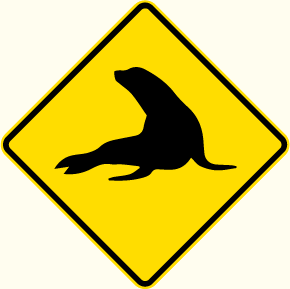 |
|
|
W18-3.6 Wild animals - pukeko |
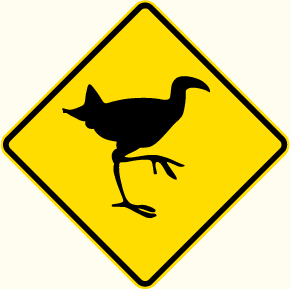 |
|
|
W18-3.7 Wild animals - ducks |
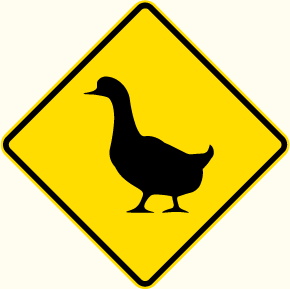 |
|
|
W18-3.8 Wild animals - penguin |
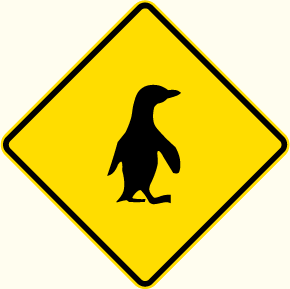 |
|
|
W18-3.9 Wild animals - kiwi |
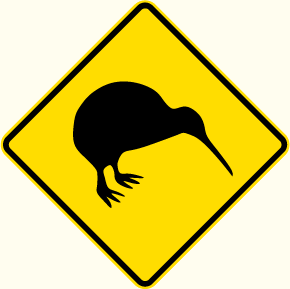 |
|
|
W18-3.10 Wild animals - kereru |
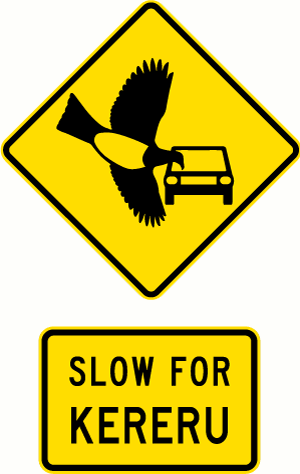 |
|
|
W18-3.12 Wild animals - bittern |
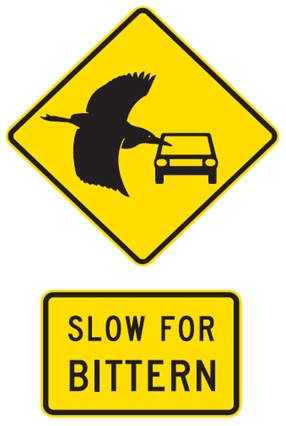 |
Table 12‑3: Vehicles crossing permanent warning signs
| Sign code | Example | Description/use |
|---|---|---|
|
W18-2 Aircraft |
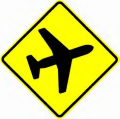 |
Should be installed on the approaches to an airfield where low flying aircraft cross the roadway at heights below 60m. The sign is intended to warn drivers of the sudden, unexpected high-pitched noise produced by aircraft taking off under full throttle and crossing the roadway almost at right angles, or, as advance warning of flashing red signals which control road traffic when aircraft are operating. For sign location see notes 1 and 2 of Table 12‑1 |
|
W18-2.1 Helicopter |
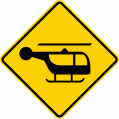 |
Should be installed where a helicopter pad is located near the road and helicopters fly over the roadway at low altitude. These signs may also be installed where, in the opinion of the RCA, the presence of helicopters operating within the area could be a surprise or distraction to road users. For sign location see notes 1 and 2 of Table 12‑1 |
|
W18-4 Trucks operate |
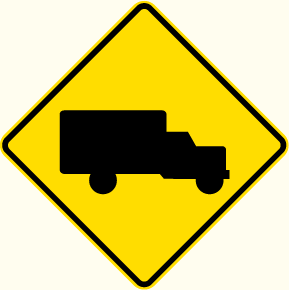 |
Should be installed where, in the opinion of the RCA, roadway conditions and the presence of heavy commercial vehicles and buses create a hazard – in particular where narrow roadways on tortuous alignments carry considerable volumes of laden trucks during most of the year. These should not be installed in urban areas. For sign location see notes 1 and 2 of Table 12‑1 |
|
W18-6 Forklifts operate |
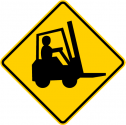 |
Should be installed where, in the opinion of the RCA, there is the frequent use of the areas within the road reserve and adjacent to the roadway by forklifts which constitutes a hazard. For sign location see notes 1 and 2 of Table 12‑1 |
Table 12‑4: Miscellaneous permanent warning signs
| Sign code | Example | Description/use |
|---|---|---|
|
W18-1 Wind gusts |
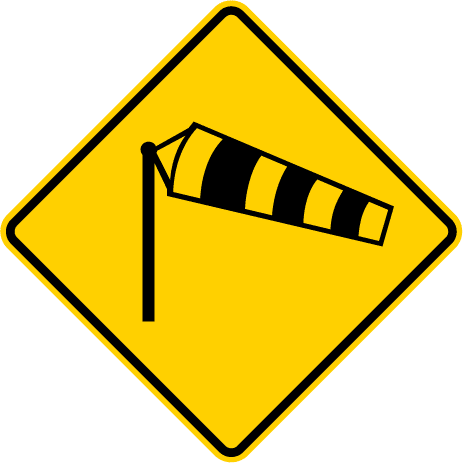 |
Should be installed in rural areas in advance of short sections of road that are subject to sudden unexpected wind gusts in excess of 70km/h (caused by local topographical conditions) and which the RCA considers may cause a vehicle to be deflected from its intended course. For sign location see notes 1 and 2 of Table 12‑1 |
|
W14-8 Other hazard W14-8.1 Other hazard supplementary - ford |
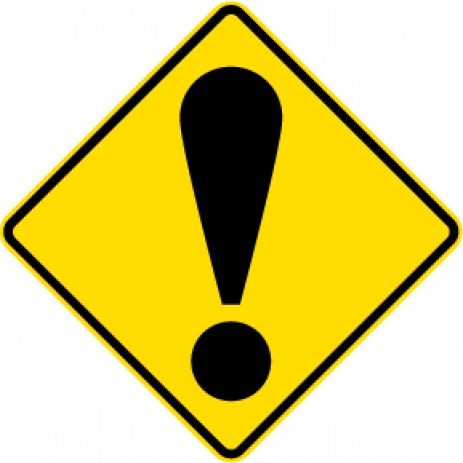 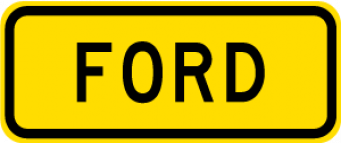 |
Should be installed in advance of a section of road where vehicles are required to negotiate a ford. Where the crossing is of a temporary nature the temporary W2-1A/B and W2-1.1A/B, Hazard warning – Flooding sign should be used. For signs location see notes 1 and 2 of Table 12‑1 |
|
W14-8 Other hazard W14-8.2 Other hazard supplementary – cattle stop |
 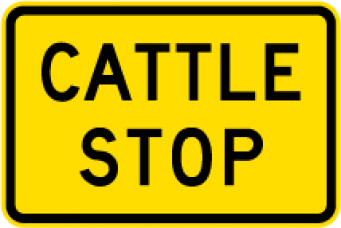 |
Should be installed in advance of cattle stops (consisting of open grids) that are installed across public roads, where, in the opinion of the RCA the grid cannot be crossed safely at the normal traffic operating speeds prevailing in the vicinity. The sign should not be used when the cattle stop is within an entrance to private land or in an urban area. For sign location see notes 1 and 2 of Table 12‑1 |
|
W14-8 Other hazard W14-8.3 Other hazard supplementary - gate |
 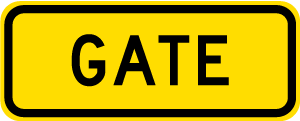 |
Should be installed in rural areas in advance of gates that are present across public roads. For signs location see notes 1 and 2 of Table 12‑1 |